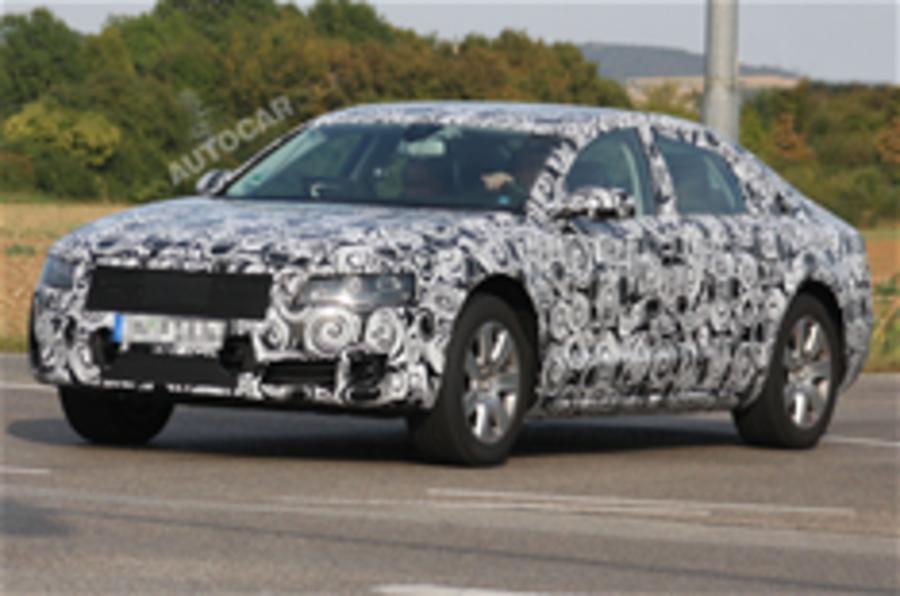Audi is poised to switch to lightweight aluminium construction for future models from the A4 upwards.
By the middle of the next decade only the A3 and forthcoming A1 families will be based on conventional steel monocoque chassis.
Click here to see the Audi A8 high resolution spy pictures
Read our first drive of the Audi A5 lightweight prototype
An Audi source told Autocar that the company ‘will shift quite quickly to hybrid aluminium construction’ for the next-generation A6 and A4 models, after rolling it out on the next A8.
The third-generation A8 flagship will be shown later this year and will pioneer the new ‘hybrid aluminium’ construction techniques that will allow Audi to use the lightweight metal for high volume production.
Autocar understands that the new A8 structure uses new construction and manufacturing methods that also be utilised for models lower down the range.
The essence of the structure is large aluminium castings for key areas including the front and rear chassis legs, the front suspension mounts, the base of the A-pillar and the front section of the transmission tunnel
At 1.4m long, the new A8’s rear chassis leg is said to be the largest diecasting in the world. The A8’s door structures are now also cast in one piece
These castings (which are also a crucial element of the safety structure) can apparently be used to underpin all Audi models based around longitudinal engines.
The rest of Audi’s new body structure (including the sills, roof structure and floor sections) is made of inexpensive aluminium extrusions that can be easily cut and bent to size.
However, Audi engineers have introduced additional materials to the new A8’s ‘hybrid aluminium’ platform. The car’s B-pillars are now made from ‘monolithic plate’ steel, which is heated up until it becomes floppy and is then stamped into shape.
This allows Audi engineers to design a B-pillar that has varying wall thickness without going to the expense of using ‘tailored blank’ sheet steel.
Audi is also expected to use lightweight carbon reinforced plastics for the new A8’s bonnet and boot lid. The material – which allows complex shapes to be made in a single moulding - is already used for the Lamborghini Gallardo deck lid and will be used for the upper rear wing of the Audi R8 convertible. Lastly, thin-walled magnesium castings will be used for the A8’s engine cradle.





Join the debate
Add your comment
Re: Audi's aluminium revolution
So tell that to Ferrari whose every current car is aluminium-clad. Tell that to BMW whose suspensions on the 7 and 5 is also aluminium clad.
Also tell that to Jaguar whose XJ is the lightest car in its class.
Hate to say it, but it's your piece that's hot air.
Re: Audi's aluminium revolution
"BMW are still late - to date they don't have a fully aluminum bodied car. And they even ditched aluminium for the 5GT's suspension - and it weighs 2 tons."
BMW are in trouble. They have anounnouced they will be sticking with steel for all their upcoming car lines. Quite simply BMW cars will be downright heavy while Audi's will be lighter and probably safer due to AL's rigidity. Seems there is certainly trouble ahead for BM. J
Re: Audi's aluminium revolution
As I said in the other thread, aluminium cars are costly to repair and costly to insure - even a supermarket scrape needs the attention of a specialist repairer. Few drivers would be able to state categorically whether the car they were travelling in was made from steel, aluminium or super hard bananas, and making a deal about a car's construction is like making a deal about its high precision injection system - it's PR hot air, the likes of which impresses only the easily impressed (see above).